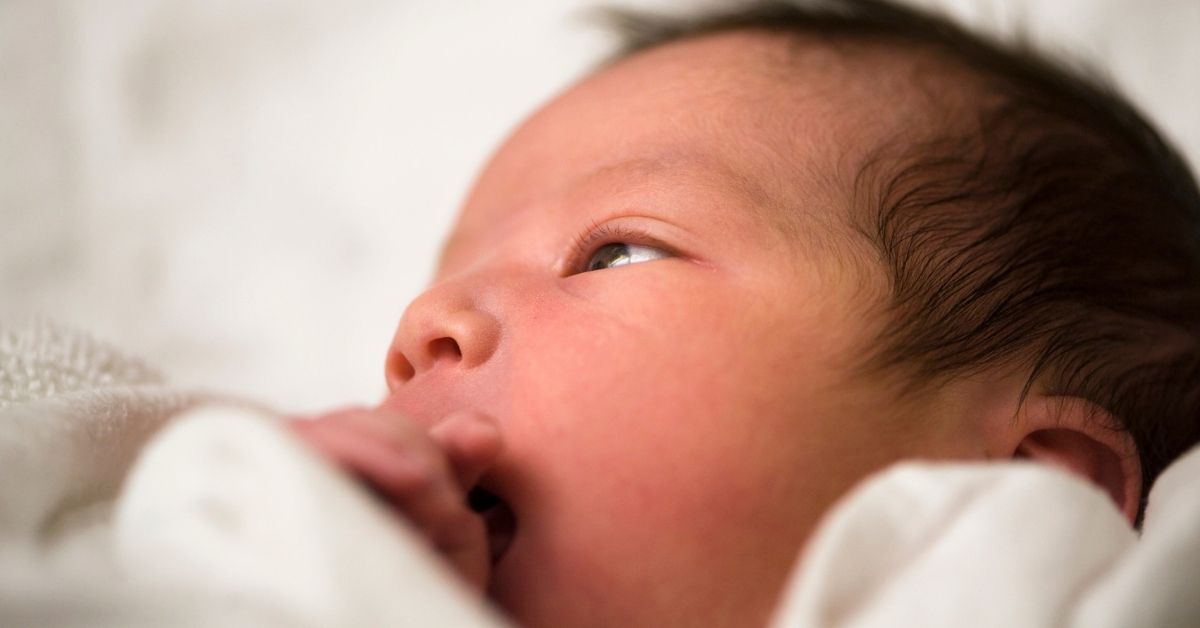
Authors: Margaret Means, MD; Sonika Agarwal, MBBS, MD, Children’s Hospital of Philadelphia
Reviewed: July 2021
SUMMARY
In microcephaly, a child’s head is significantly small for that child’s age and sex. This is usually due to abnormal brain development. The brain may have developed differently during pregnancy or after birth.
This condition can have many different genetic or environmental causes. Children will usually have developmental delays. They may have other neurological issues, too. Seizures are one example.
A diagnosis is made by:
- Measuring the head
- Looking at images of the brain
Treatment usually includes several therapies. The therapies can help with delays. They can help with other symptoms, too.
JUMP TO
Disorder Overview
DESCRIPTION
In the United States, about 1 in every 800–5,000 babies are born with microcephaly. There is a wide range due to different causes at different ages. It is also because of a range of severities (mild or borderline, moderate and severe).
Children with microcephaly have a head circumference (distance around the head) at or below the third percentile for head growth. In other words, they will have a smaller head than 97% or more of children of their age and sex.
A healthcare provider will measure the head circumference during the physical examination. This is compared to the standard charts provided by organizations like the CDC (Center for Disease Control). These measurements are also compared to the measurements for parents or siblings.
Symptoms can range from mild to severe. In general, the smaller the head size, the more severe the symptoms. There are a number of different causes, as described below:
- Lack of normal brain growth
- Poor brain development before or after birth
- Exposures to infections, toxins, drugs and alcohol
- Interruption to flow of oxygen and or blood supply to the brain during development
There may also be unknown reasons.

SIGNS AND SYMPTOMS
Signs
Diagnosis is made by measuring the head.
This may be done with:
Differences in how a child’s brain has developed can be seen with brain imaging.
Magnetic resonance imaging (MRI) is often used for this imaging.
Symptoms
The two symptoms present in about half of all patients are:
- Developmental delay
- Cognitive disability
These symptoms can range from mild to severe. It depends on the cause and severity of the microcephaly.
Other possible symptoms include issues with:
- Seizures
- Movement
- Balance
- High muscle tone
- Low muscle tone
- Feeding
- Growing or gaining weight
- Hearing
- Vision
Sometimes, microcephaly is part of an underlying genetic syndrome in which other organ systems have problems.
Sometimes, a small head is the only sign of microcephaly.

CAUSES
There are many possible causes.
Genetic Causes
Genetic causes can occur for different reasons. They may be:
- Inherited from parents
- Due to a new change in a gene in the child
Examples of genetic causes include:
Chromosome disorders
Isolated primary microcephaly
Metabolic disorders
Metabolic disorders may be inherited or due to new mutations. They cause an abnormality of proteins that control functions in the brain and body, resulting in either a build-up of toxic substances in the brain and other tissues or an absence of an important function in the brain.
Structural brain malformations
Sometimes, the brain structure is abnormal during the developmental process in the womb. It can be caused by many factors such as genetic, infectious, metabolic issues and exposures. These include abnormal structural developmental diagnoses such as: holoprosencephaly, polymicrogyria, schizencephaly, lissencephaly, neural tube defects and others.
Syndromic microcephaly
Acquired Causes
Acquired causes are causes not related to genetics.
During Pregnancy
Microcephaly can be caused by issues affecting a mother during pregnancy.
They include:
- High blood pressure
- Untreated diabetes
- Problems with the placenta
- Malnutrition
- Infections, such as: Toxoplasmosis, Syphilis, Varicella Zoster, Parvovirus B-19, Rubella, Cytomegalovirus (CMV), Herpes virus, Zika virus
- Heavy alcohol or drug use, other toxins

Other Acquired Causes
Some other causes that can arise include:
Hypoxic ischemic brain injury
Due to lack of oxygen or blood flow. Learn more about hypoxic ischemic brain injuries.
Other brain injury
Stroke is an example, or trauma to the developing brain.
Sometimes, the exact cause cannot be determined.
LABORATORY INVESTIGATIONS
Clinical Exam
Diagnosis may involve measuring a child’s head. Doctors measure the circumference, or distance around, a child’s head. A child’s head circumference is typically measured at each doctor’s visit.
Brain Imaging
Pictures taken of the brain can provide information to doctors. The pictures can show differences in how a child’s brain developed. Two types of imaging are most common:
Blood Testing
Tests for infections may be used to look for an underlying cause, such as CMV (cytomegalovirus), toxoplasma, Zika virus.
Genetic Testing
Tests for changes in the child’s genes may reveal a likely cause. Parents may then also be tested. Testing parents can show whether a genetic change is inherited or new in the patient. It can help determine the risk of this condition appearing in future pregnancies. A genetic counselor can help interpret test results.
Genetic tests may include:
A microcephaly panel
TREATMENT AND THERAPIES
Treatment usually focuses on symptoms. If the condition is severe, a child may need long-term treatment.
Therapies
Various therapies may be needed. Therapies can include:
- Physical therapy
- Occupational therapy
- Speech therapy
- Feeding therapy
Seizure Treatment
Some patients have seizures. In these cases, antiseizure medicine may be needed.
Seizures in patients with microcephaly can be difficult to control. However, there are multiple medicines available. Sometimes, no medicine can control the seizures. In these cases, there are alternatives to consider:
- Dietary options
- Surgical options
OUTLOOK
Prognosis varies greatly. It depends on:
- Severity
- Underlying cause
In general, the more severe the condition (the smaller the child’s head), the more severe the symptoms.
Severe Cases
In severe cases:
Lifespan
Disability
Milder Cases
In milder cases:
Disability

RELATED DISORDERS
Microcephaly may be only one symptom of a greater genetic disorder. It may be accompanied by other symptoms of the disorder. Often times, if your doctor is suspicious of an underlying genetic disorder, your child may be referred to a genetics specialist for further evaluation.
There are many different genes now known to cause microcephaly. More genes will likely be discovered over time.
Research
ClinicalTrials.gov for Microcephaly are clinical trials that are recruiting or will be recruiting. Updates are made daily, so you are encouraged to check back frequently.
ClinicalTrials.gov is a database of privately and publicly funded clinical studies conducted around the world. This is a resource provided by the U.S. National Library of Medicine (NLM), which is an institute within the National Institutes of Health (NIH). Listing a study does not mean it has been evaluated by the U.S. Federal Government. Please read the NLM disclaimer for details.
Before participating in a study, you are encouraged to talk to your health care provider and learn about the risks and potential benefits.
The information in the CNF Child Neurology Disorder Directory is not intended to provide diagnosis, treatment, or medical advice and should not be considered a substitute for advice from a healthcare professional. Content provided is for informational purposes only. CNF is not responsible for actions taken based on the information included on this webpage. Please consult with a physician or other healthcare professional regarding any medical or health related diagnosis or treatment options.
References
Swaiman KF. Swaiman’s Pediatric Neurology: Principles and Practice. Edinburgh: Elsevier; 2018. Ch 28: Disorders of Brain Size. p. 208-212.
Pina-Garza JE. Fenichel’s Clinical Pediatric Neurology. London: Elsevier Saunders; 2013. Ch 18: Disorders of Cranial Volume and Shape. p. 358-359.
Microcephaly. Mayo Clinic. Published June 25, 2020. https://www.mayoclinic.org/diseases-conditions/microcephaly/symptoms-causes/syc-20375051
Facts about Microcephaly. Centers for Disease Control and Prevention. Published October 23, 2020. https://www.cdc.gov/ncbddd/birthdefects/microcephaly.html
Ashwal S, Michelson D, Plawner L, Dobyns WB. Practice parameter: Evaluation of the child with microcephaly (an evidence-based review): Report of the quality standards subcommittee of the American Academy of Neurology and the Practice Committee of the Child Neurology Society. Neurology. 2009 Sep 15;73(11):887–97. PMID: 19752457; https://doi.org/10.1212/WNL.0b013e3181b783f7
